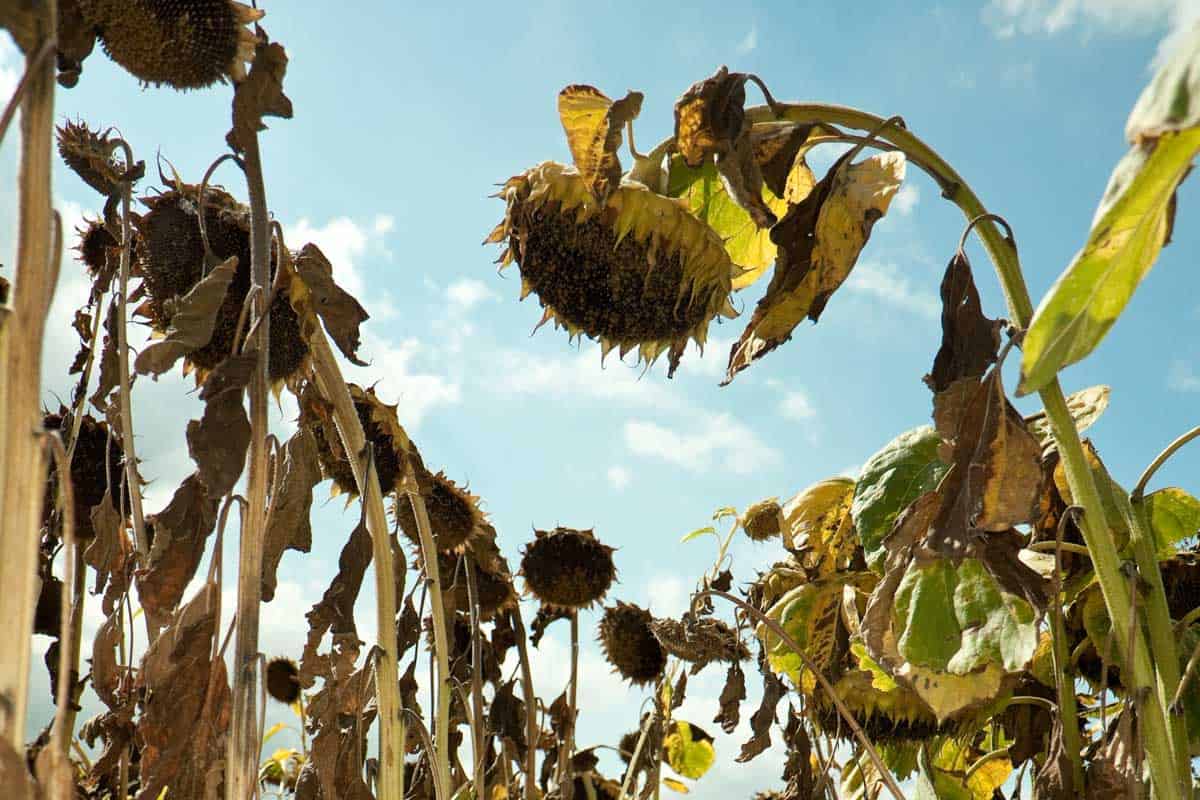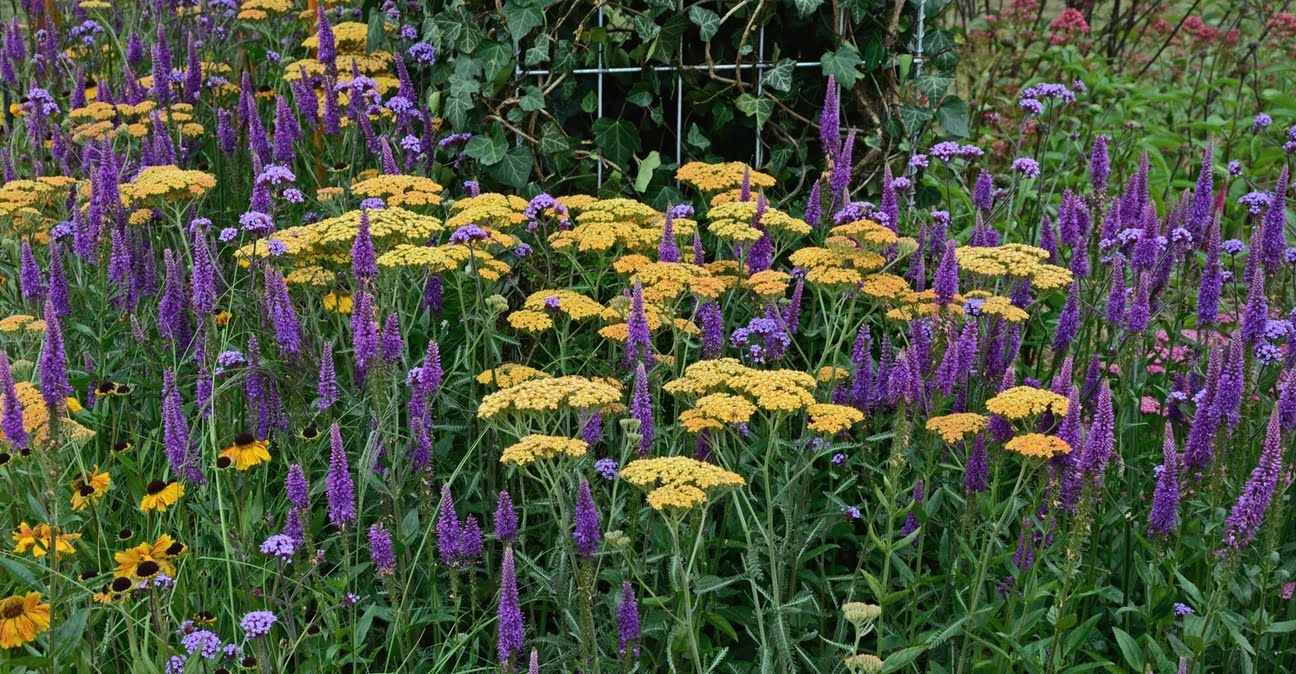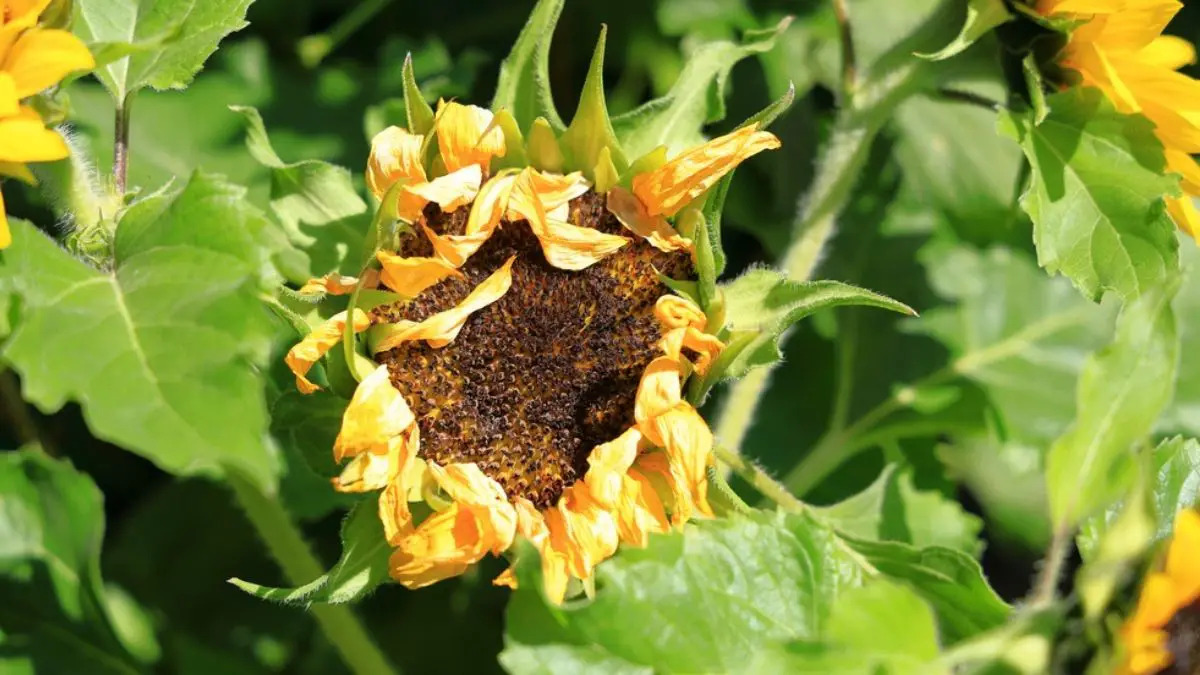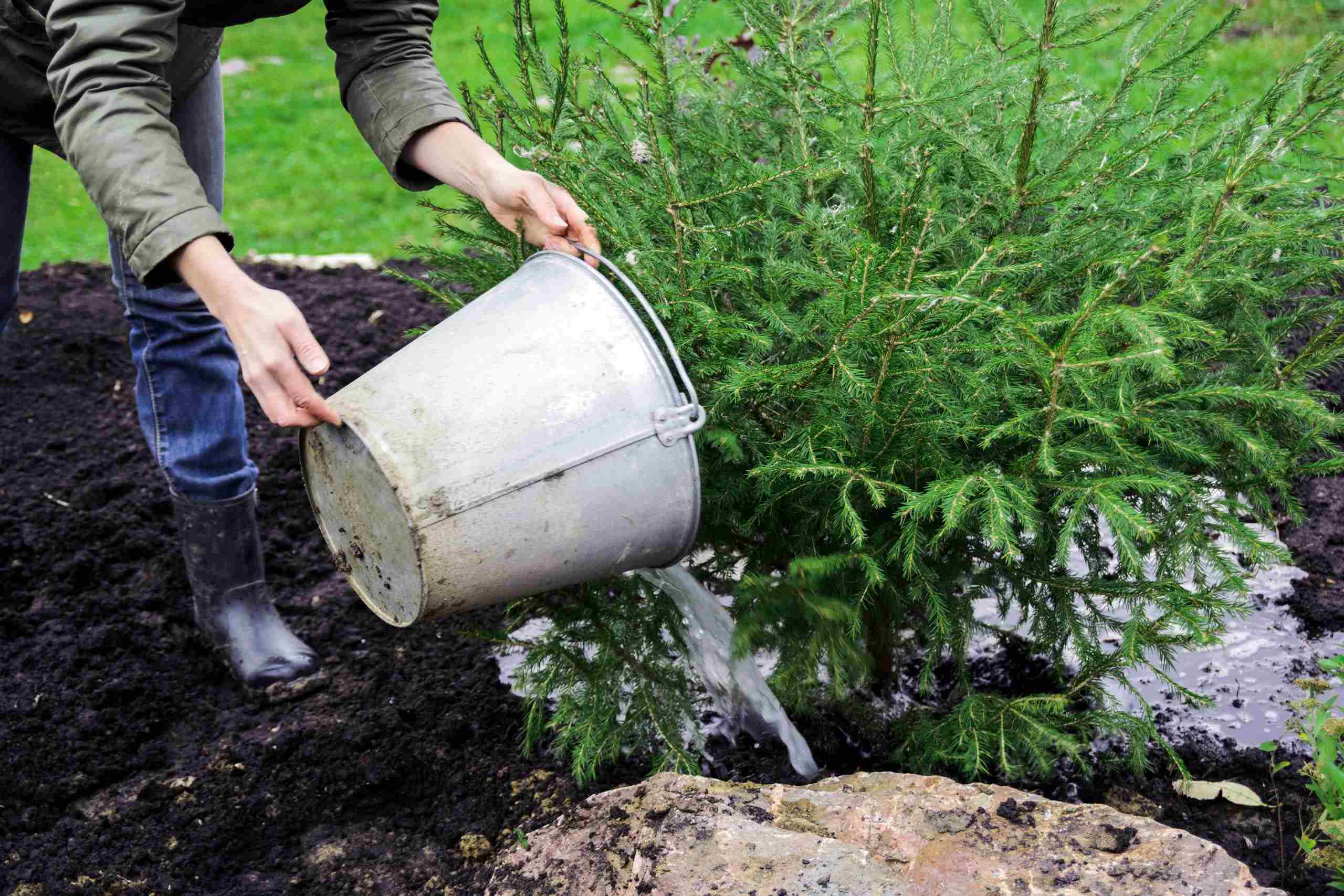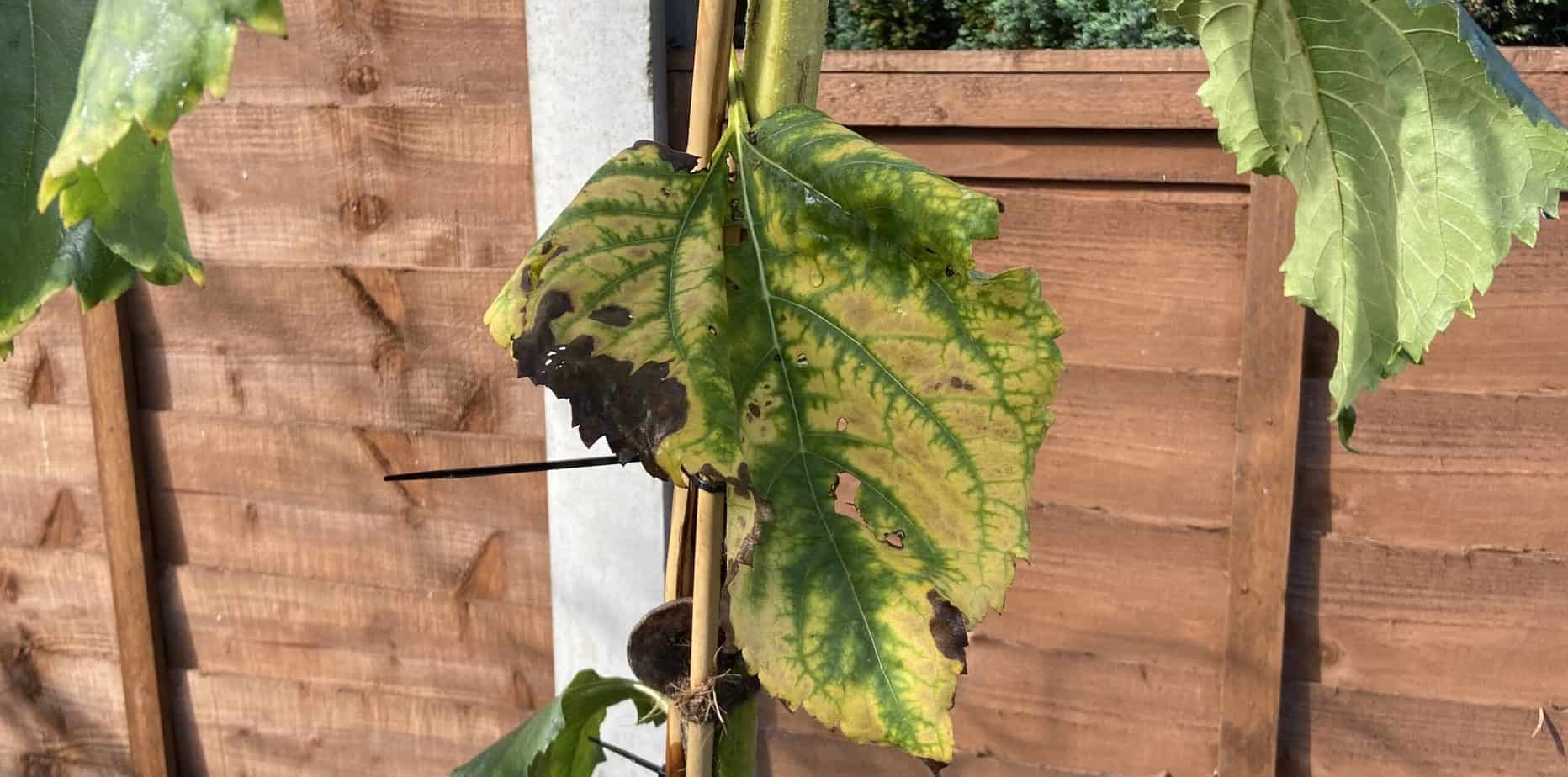Home>Types of Gardening>Ornamental Gardening>Why Are Sunflowers Planted In Nuclear-Affected Areas
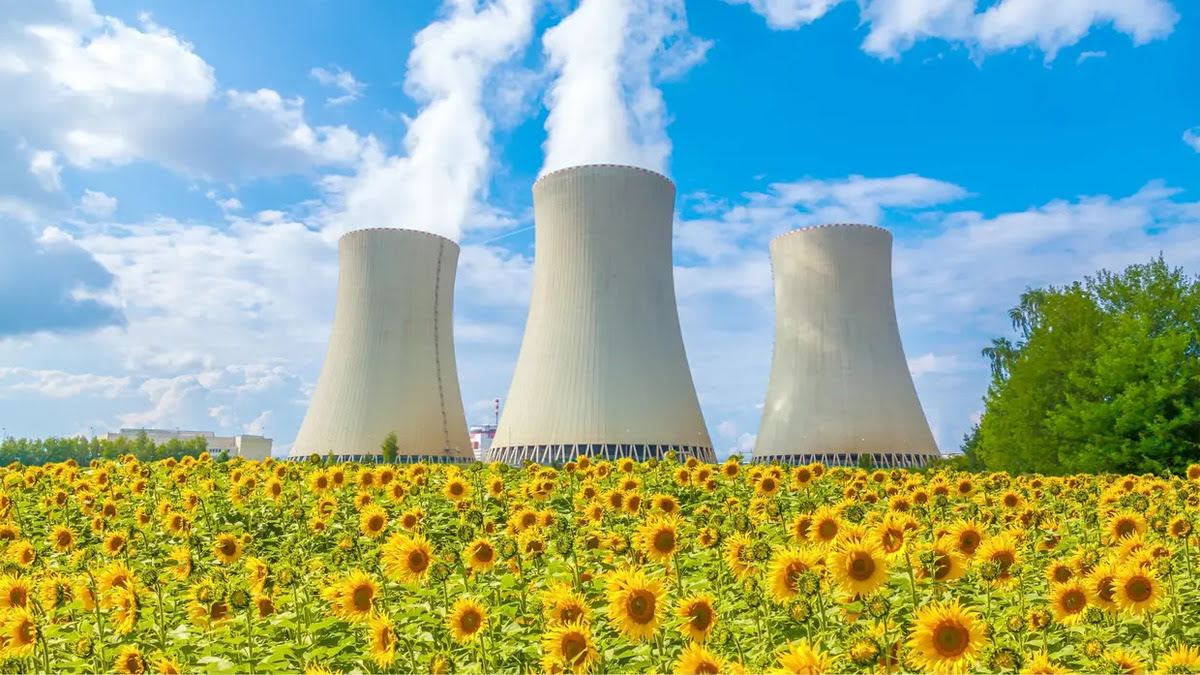

Ornamental Gardening
Why Are Sunflowers Planted In Nuclear-Affected Areas
Modified: January 22, 2024
Discover the reasons behind the unique practice of planting sunflowers in nuclear-affected areas, and how it relates to the world of ornamental gardening.
(Many of the links in this article redirect to a specific reviewed product. Your purchase of these products through affiliate links helps to generate commission for Chicagolandgardening.com, at no extra cost. Learn more)
Table of Contents
- Introduction
- Background on nuclear-affected areas
- Sunflowers as bioaccumulators
- Phytoremediation and its role in nuclear clean-up
- Benefits of planting sunflowers in nuclear-affected areas
- Challenges and limitations of using sunflowers for phytoremediation
- Case studies of sunflower planting in nuclear-affected areas
- Future prospects and research directions
- Conclusion
Introduction
Ornamental gardening is a beloved pastime for many individuals who take pleasure in beautifying their outdoor spaces. However, gardening can be more than just a simple hobby; it can also have significant benefits for the environment. One particular aspect of ornamental gardening that has gained attention in recent years is its potential in phytoremediation, specifically in nuclear-affected areas. This involves the use of specific plants, such as sunflowers, to remove or neutralize pollutants from the soil and water.
Nuclear accidents and incidents have left a lasting impact on various parts of the world, resulting in soil and water contamination. Contaminants like heavy metals, radioactive isotopes, and other toxic substances pose significant risks to both human and ecological health. Traditional methods of decontamination often involve costly and time-consuming processes. However, the use of sunflowers in phytoremediation has shown promise in providing a more sustainable and cost-effective solution.
Sunflowers (scientifically known as Helianthus annuus) are not only known for their vibrant appearance but also for their unique ability to absorb and accumulate contaminants from the soil and water. They possess an exceptional tolerance and affinity for toxic elements, making them ideal candidates for removing pollutants from nuclear-affected areas. By planting sunflowers in these areas, we can harness the power of nature to aid in the process of environmental restoration.
This article will explore the concept of using sunflowers for phytoremediation in nuclear-affected areas. We will delve into the science behind why sunflowers are effective bioaccumulators and how this process, known as phytoremediation, works. Additionally, we will discuss the numerous benefits of planting sunflowers in nuclear-affected areas, as well as the challenges and limitations associated with this approach.
Through examining real-life case studies and ongoing research in this field, we will shed light on the practical applications of utilizing sunflowers for nuclear clean-up. Lastly, we will speculate on the future prospects and potential advancements in this area, highlighting the role that ornamental gardening can play in addressing environmental challenges.
Background on nuclear-affected areas
Nuclear-affected areas are regions that have been contaminated by radioactive materials due to nuclear accidents, nuclear power plant failures, or nuclear testing. These incidents have occurred throughout history, leaving a lasting impact on the environment and human populations in affected areas.
One of the most notable nuclear accidents in history is the Chernobyl disaster, which occurred in 1986 in Ukraine. The explosion and subsequent meltdown of the nuclear reactor released a significant amount of radioactive material into the surrounding environment. As a result, large areas of land became contaminated, rendering them unfit for agricultural use and posing severe health risks to residents in the vicinity. The Fukushima disaster in Japan in 2011 is another prime example of a nuclear accident that caused widespread contamination.
In addition to accidents, nuclear weapons testing has also left nuclear-affected areas in various parts of the world. Countries such as the United States, the Soviet Union, and France conducted extensive nuclear weapons testing during the mid-20th century, leading to contamination of land, water, and air in areas close to the test sites.
The contamination of these areas poses significant risks to both human and ecological health. Radioactive materials, such as cesium-137, strontium-90, and plutonium-239, can persist in the environment for extended periods of time, emitting harmful radiation. Chronic exposure to radiation can lead to various health problems, including genetic mutations, cancer, and organ damage.
Traditional methods of decontamination, such as excavation and disposal of contaminated material, can be expensive, time-consuming, and often result in the creation of further waste. As a result, scientists and environmentalists have been exploring alternative approaches to environmental remediation, including the use of phytoremediation.
By harnessing the natural abilities of certain plants, it is possible to remediate nuclear-affected areas in a more sustainable and cost-effective manner. This innovative approach utilizes specific plant species that have the ability to absorb, accumulate, and neutralize toxic elements from the soil and water. Sunflowers are one such plant that has shown great potential in this regard.
Sunflowers as bioaccumulators
Sunflowers, with their vibrant yellow blooms and towering stature, are not just aesthetically pleasing plants; they also possess unique characteristics that make them effective bioaccumulators. Bioaccumulation refers to the process by which plants absorb and accumulate substances, including heavy metals and radioactive isotopes, from the soil and water.
One of the key factors that make sunflowers ideal for bioaccumulation is their extensive root system. Sunflower roots are known to be deep and widely spread, allowing them to extract nutrients and water from a large volume of soil. This root structure also enables them to come into contact with and absorb contaminants that may be present in the soil, including heavy metals like lead, cadmium, and arsenic.
Sunflowers have a unique ability to tolerate high levels of these toxic elements without suffering significant negative effects. Some studies have shown that sunflowers can accumulate heavy metals in their roots, stems, and leaves without experiencing any visible signs of damage or toxicity. This tolerance allows them to thrive in contaminated environments while actively removing pollutants from the soil and water.
Furthermore, sunflowers have a high affinity for specific radioactive isotopes, such as cesium-137 and strontium-90, which are commonly found in nuclear-affected areas. These isotopes mimic essential nutrients like potassium and calcium, and sunflowers readily take them up through their root systems. By accumulating these radioactive isotopes in their tissues, sunflowers effectively remove them from the surrounding environment.
Once sunflowers have absorbed the contaminants, they have the ability to store them in their above-ground biomass. This means that the contaminants are no longer present in the soil or water, reducing the risk of exposure to humans and other organisms. This ability to sequester pollutants within their biomass is what makes sunflowers valuable in the field of phytoremediation, specifically in nuclear-affected areas.
It is worth noting that not all species of sunflowers exhibit the same level of bioaccumulation capability. Different varieties have different levels of tolerance and affinity for specific contaminants. Therefore, careful selection of sunflower varieties is crucial to optimize their effectiveness in phytoremediation projects.
Overall, sunflowers have proven to be highly effective bioaccumulators due to their deep root system, tolerance to toxins, and affinity for heavy metals and radioactive isotopes. These qualities make them an excellent choice for phytoremediation projects in nuclear-affected areas. By harnessing the natural abilities of sunflowers, we can take a significant step towards restoring the health and vitality of these contaminated environments.
Phytoremediation and its role in nuclear clean-up
Phytoremediation is a sustainable and cost-effective approach that utilizes plants to remove, degrade, or immobilize contaminants from the environment. This innovative technique has gained significant attention in recent years, particularly in the context of nuclear clean-up in affected areas.
The process of phytoremediation involves several mechanisms by which plants can mitigate pollution. One such mechanism is phytostabilization, where plants immobilize contaminants in the soil, preventing them from spreading further. This is particularly useful in areas heavily contaminated with radioactive isotopes, as plants like sunflowers can effectively trap and reduce the mobility of these substances.
Another mechanism is phytoextraction, which involves the uptake and accumulation of contaminants in plant tissues. Sunflowers, with their ability to accumulate heavy metals and radioactive isotopes, play a crucial role in removing pollutants from the soil and water. As sunflowers grow, they continuously extract contaminants from the surrounding environment, reducing their concentration and overall toxicity.
Phytovolatilization is another process in which plants uptake contaminants and release them into the air in a less harmful form. While this mechanism may not be applicable in all cases of nuclear contamination, it can still contribute to the reduction of pollutant levels, especially for volatile substances.
One of the significant advantages of phytoremediation is its non-destructive nature. Unlike traditional methods of soil excavation and disposal, phytoremediation allows for the remediation of contaminated sites without causing further damage or creating additional waste. In addition, it is a sustainable approach as it utilizes the natural capabilities of plants to restore the environment.
Phytoremediation in nuclear clean-up has additional benefits beyond contaminant removal. It also helps to improve soil quality and fertility. The extensive root systems of plants, including sunflowers, promote soil aeration and can enhance nutrient cycling. As the plants absorb contaminants, they break them down into less hazardous compounds, aiding in the natural detoxification of the soil.
Furthermore, phytoremediation projects involving sunflowers can have positive impacts on local ecosystems. The presence of sunflowers attracts a diverse array of insects, birds, and butterflies, contributing to the overall biodiversity of the area. This, in turn, has cascading effects on the ecosystem, promoting pollination and providing habitats for various species.
Overall, phytoremediation, with the help of plants like sunflowers, plays a crucial role in nuclear clean-up efforts. By utilizing the natural abilities of plants to absorb, accumulate, and detoxify contaminants, we can work towards restoring and revitalizing nuclear-affected areas. With further research and application, phytoremediation has the potential to be a sustainable and effective solution to the complex challenges posed by environmental pollution.
Benefits of planting sunflowers in nuclear-affected areas
The planting of sunflowers in nuclear-affected areas offers numerous benefits, both in terms of environmental remediation and community well-being. Let’s explore the advantages of utilizing sunflowers for phytoremediation in such areas.
1. Efficient removal of contaminants: Sunflowers are highly effective in extracting and accumulating pollutants such as heavy metals and radioactive isotopes from the soil and water. Their extensive root system and bioaccumulation capabilities make them efficient at reducing the concentration and toxicity of these harmful substances.
2. Cost-effective solution: Traditional methods of decontamination, such as excavation and disposal, can be expensive and time-consuming. In comparison, phytoremediation using sunflowers offers a more cost-effective alternative. The natural ability of sunflowers to absorb and store contaminants reduces the need for costly interventions.
3. Sustainable approach: Phytoremediation with sunflowers is an environmentally friendly solution. It harnesses the natural processes of plants to remediate the soil and water, avoiding the use of chemicals or machinery. This approach minimizes disruption to the ecosystem and promotes long-term sustainability.
4. Improvement of soil quality: Sunflowers and other phytoremediation plants can improve the overall quality of the soil in nuclear-affected areas. As they accumulate contaminants, they break them down into less toxic forms, contributing to the natural detoxification of the soil. Additionally, the extensive root systems of sunflowers promote soil aeration and nutrient cycling.
5. Habitat creation: The presence of sunflowers in nuclear-affected areas creates habitats for various organisms. Insects, birds, and butterflies are attracted to these vibrant flowers, contributing to the overall biodiversity and ecological balance. This positive impact on local ecosystems is an additional benefit of planting sunflowers.
6. Public awareness and engagement: Sunflower planting projects in nuclear-affected areas provide opportunities to engage the community and raise awareness about the environmental consequences of nuclear accidents. Involving local residents in the process can foster a sense of ownership and empowerment, while educating them about the importance of environmental sustainability.
7. Aesthetically pleasing: Sunflowers are known for their stunning blooms, bringing beauty and joy to the surroundings. In nuclear-affected areas, the presence of sunflowers can bring a sense of hope and rejuvenation, transforming the once desolate landscape into a vibrant and colorful one.
It is important to note that while sunflowers offer significant benefits, they are not a standalone solution to nuclear clean-up. Each nuclear-affected area presents unique challenges and may require a combination of remediation methods. However, the use of sunflowers in phytoremediation projects can significantly contribute to the restoration and rehabilitation of these areas.
Challenges and limitations of using sunflowers for phytoremediation
While sunflowers have shown great promise in phytoremediation projects in nuclear-affected areas, there are several challenges and limitations to consider. Understanding these factors is essential for effective implementation and managing expectations. Let’s explore some of the main challenges associated with using sunflowers for phytoremediation.
1. Selectivity: Sunflowers may not be equally effective at removing all types of contaminants. Different varieties have varying affinities for specific heavy metals and isotopes. Selecting the most suitable sunflower variety for a particular site is crucial to ensure optimal phytoremediation outcomes. Additionally, some contaminants may not be readily absorbed or translocated by sunflowers, limiting their effectiveness for certain pollutants.
2. Biomass disposal: After sunflowers have accumulated contaminants in their tissues, proper disposal of the biomass becomes a challenge. The harvested biomass often presents a hazardous waste concern due to the presence of concentrated pollutants. Appropriate disposal methods that adhere to environmental regulations and minimize potential risks need to be implemented.
3. Time and patience: Phytoremediation is a time-consuming process that requires patience. Sunflowers need time to establish and grow before they can effectively remove contaminants from the soil and water. Depending on the level of contamination, it may take multiple growing seasons to achieve desired results. Long-term commitment and monitoring are essential for successful sunflower phytoremediation projects.
4. Suitability of the soil: The success of sunflower phytoremediation projects depends on the suitability of the soil for plant growth. Factors such as pH, nutrient content, and organic matter can significantly influence the performance of sunflowers. Soil amendments and adjustments might be necessary to create optimal conditions for sunflowers to thrive and enhance their phytoremediation capabilities.
5. Site accessibility and safety: In some nuclear-affected areas, access restrictions and safety concerns may hinder the implementation of sunflower phytoremediation projects. The presence of radioactive materials necessitates strict protocols to ensure worker and public safety. Access to contaminated areas may be limited, and additional precautions may be required to prevent the spread of radioactive contaminants during the project.
6. Monitoring and long-term maintenance: Phytoremediation projects involving sunflowers require continuous monitoring and long-term maintenance to ensure their effectiveness. Regular assessments of soil and water quality, as well as ongoing care for the sunflowers, are necessary to track progress and address any potential issues. Without proper monitoring and maintenance, the remediation process may be compromised.
While these challenges and limitations exist, ongoing research and developments in phytoremediation techniques continually expand our understanding and improve the efficiency of using sunflowers for remediation projects. By considering and addressing these challenges, we can maximize the benefits and effectiveness of utilizing sunflowers in nuclear clean-up efforts.
Case studies of sunflower planting in nuclear-affected areas
Several case studies have demonstrated the successful application of sunflower planting in nuclear-affected areas for phytoremediation purposes. These studies provide valuable insights into the effectiveness of using sunflowers to restore contaminated environments. Let’s explore a few notable examples.
1. Chernobyl, Ukraine: Following the 1986 Chernobyl disaster, scientists initiated a project known as the “Chernobyl Sunflower” experiment. Sunflowers were planted in areas heavily contaminated with radioactive isotopes, including cesium-137 and strontium-90. The sunflowers effectively absorbed these isotopes from the soil, reducing their levels and preventing further spreading. This pioneering initiative showcased the potential of sunflowers in nuclear clean-up efforts.
2. Fukushima, Japan: In the aftermath of the 2011 Fukushima disaster, sunflowers were planted in contaminated areas to aid in phytoremediation. These sunflowers helped absorb radioactive isotopes, such as cesium-137, from the soil. The project not only contributed to reducing contamination levels but also provided a sense of optimism and hope for the affected communities. The vibrant yellow blooms of the sunflowers brought a visual reminder of nature’s ability to heal.
3. Hanford Site, United States: The Hanford Site in Washington state, USA, was once a major nuclear production facility. After decades of nuclear activity, the site became heavily contaminated with various pollutants. To address the contamination, researchers planted sunflowers in selected areas to assess their phytoremediation potential. The sunflowers demonstrated their ability to accumulate heavy metals and radioisotopes, aiding in the cleanup efforts and demonstrating the viability of sunflower planting as a remediation strategy.
4. Semipalatinsk Test Site, Kazakhstan: The Semipalatinsk Test Site was extensively used for nuclear weapons testing by the Soviet Union during the Cold War era. To address the contamination in the area, sunflowers were grown in selected locations to evaluate their phytoremediation effectiveness. The sunflowers demonstrated significant uptake of radioactive isotopes, contributing to the reduction of contamination and showcasing their potential as a remediation tool.
These case studies highlight the successes achieved through sunflower planting in nuclear-affected areas. They demonstrate the tangible benefits of utilizing sunflowers for phytoremediation and offer valuable lessons for future projects. While the specific approaches and outcomes may vary, these case studies collectively demonstrate the potential of sunflowers in restoring contaminated environments and supporting the long-term recovery of nuclear-affected areas.
Future prospects and research directions
The utilization of sunflowers for phytoremediation in nuclear-affected areas has shown great promise. However, ongoing research and advancements are crucial to further enhance the effectiveness and efficiency of this approach. Here are some future prospects and research directions to consider:
1. Sunflower genetic engineering: Genetic engineering techniques can be employed to enhance the phytoremediation capabilities of sunflowers. Scientists can explore genetic modifications to increase the uptake and accumulation of specific contaminants or improve the overall tolerance of sunflowers to extreme environmental conditions. This research direction holds promise for creating sunflower varieties with optimized phytoremediation traits.
2. Integration with other phytoremediation techniques: Combining sunflower planting with other phytoremediation techniques, such as the use of additional plant species or microbial-assisted remediation, could lead to more comprehensive and efficient cleanup strategies. By leveraging the unique capabilities of different plants and microorganisms, synergistic effects may be achieved, enhancing the overall remediation potential.
3. Fine-tuning planting and management strategies: Research can focus on refining the planting and management strategies for sunflower phytoremediation projects. This includes investigating optimal planting densities, irrigation methods, and nutrient management practices to maximize the uptake and removal of contaminants by sunflowers. Additionally, the development of efficient biomass disposal techniques can address the challenge of safely managing the harvested sunflower biomass.
4. Long-term monitoring and impact assessment: Continued monitoring and assessment of sunflower phytoremediation projects are vital to track the long-term effectiveness and impacts of this approach. Evaluating the persistence and fate of contaminants, as well as monitoring changes in soil and water quality over time, can provide valuable data for improving future project design and management.
5. Collaboration and knowledge sharing: Encouraging collaboration among scientists, researchers, and environmental professionals working in the field of phytoremediation is crucial for advancing knowledge and sharing best practices. Partnerships between academia, government agencies, and industry can facilitate the exchange of information and promote research collaborations to accelerate progress in sunflower phytoremediation.
6. Communication and public engagement: Effective communication and public engagement are essential to generate support and understanding for sunflower phytoremediation projects. Educating the public about the science behind phytoremediation and its potential benefits can foster greater acceptance and cooperation from local communities, streamlining the implementation of future projects.
As research in sunflower phytoremediation continues to evolve, advancements in genetic engineering, integration with other techniques, improved management strategies, long-term monitoring, collaborative efforts, and public engagement will collectively contribute to realizing the full potential of sunflowers in nuclear clean-up efforts.
Conclusion
The utilization of sunflowers in phytoremediation projects for nuclear-affected areas presents a sustainable and promising approach to address soil and water contamination. Sunflowers’ unique ability to absorb and accumulate contaminants, combined with their resilience and aesthetic appeal, make them a valuable tool in environmental restoration efforts.
Through extensive root systems, sunflowers can extract pollutants, such as heavy metals and radioactive isotopes, from the soil, effectively reducing their concentration and minimizing risks to human and ecological health. Sunflowers’ bioaccumulation capabilities and their role in improving soil quality also provide long-term benefits for the environment.
Although there are challenges and limitations to consider, including selectivity, biomass disposal, time requirements, soil suitability, accessibility, and monitoring, ongoing research and advancements continue to optimize the use of sunflowers in phytoremediation. Genetic engineering, integration with other techniques, fine-tuning of planting and management strategies, long-term monitoring, collaboration, and public engagement are key areas of focus for future research in this field.
Case studies from nuclear-affected areas, such as Chernobyl, Fukushima, Hanford Site, and the Semipalatinsk Test Site, have proven the effectiveness of sunflowers in successfully remedying contaminated environments. These real-life examples highlight the potential of sunflowers to restore the health and vitality of nuclear-affected areas and provide hope for communities affected by these disasters.
Furthermore, the utilization of sunflowers in phytoremediation projects extends beyond contamination removal. It fosters public awareness, engagement, and appreciation for the role of nature in healing environmental damage. Sunflower planting projects can bring beauty and inspiration to affected areas, create habitats for diverse wildlife, and encourage communities to take an active role in environmental stewardship.
In conclusion, sunflowers offer a sustainable, cost-effective, and visually appealing solution to mitigate the impact of nuclear accidents and incidents. They demonstrate the power of nature in environmental restoration, serving as a testament to the potential of plants in restoring and revitalizing contaminated areas. By continuing to explore and implement sunflower-based phytoremediation, we can contribute to a cleaner, healthier future for both human and natural ecosystems.
